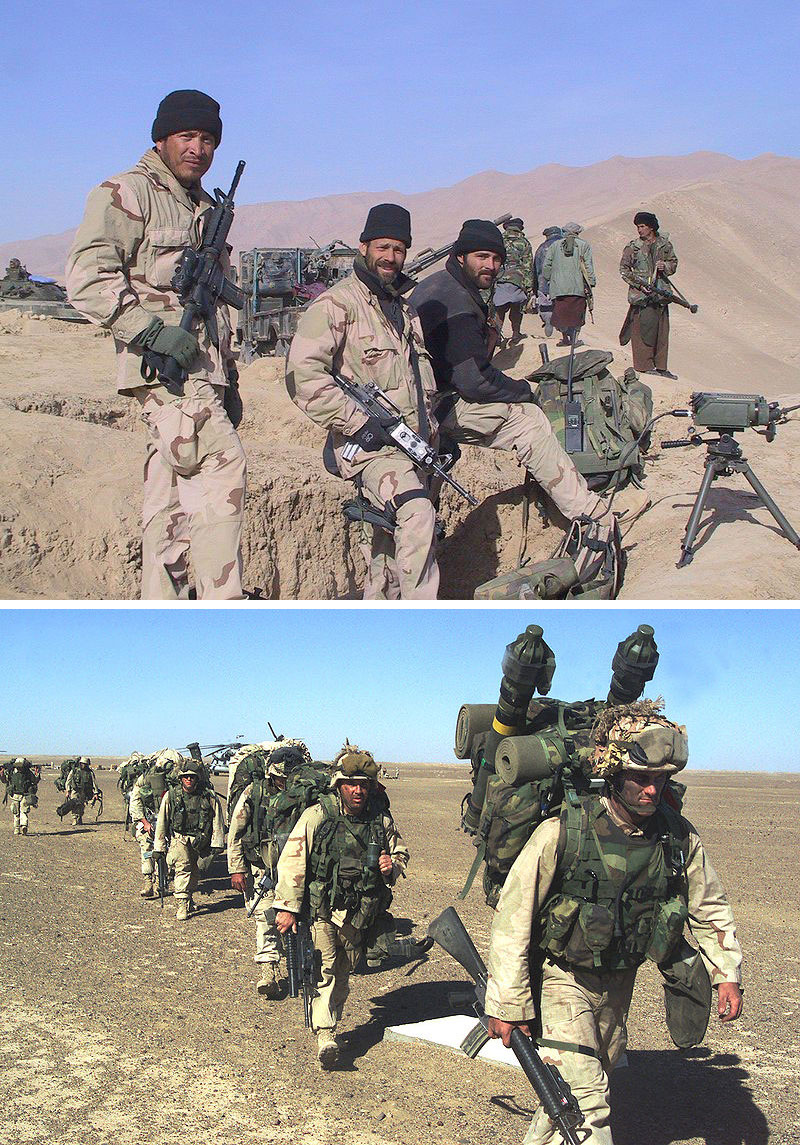1. Economy: The US has spent over 550 billion dollars on the war in Afghanistan. Each US soldier deployed in Afghanistan costs the US government over 1 million dollars per year. The number of troops has ranged from 44,000 – 102,000 (with the most troops in 2011)
2. Denmark: Denmark has deployed more than 10,000 troops in Afghanistan (over the years)
3. Bribery: CIA agents have occasionally offered Viagra to elderly Afghan chiefs to get information from them. Other bribes have included weapons, toys, school equipment, medicine and even dental care
4. The leader of the Taliban: Little is known about Taliban leader Mullah Mohammed Omar’s appearance. However, it is known that he only has one eye because he lost the other when he fought in street battles against Soviet forces in the 1980s. Sources have stated that he is a large man of approximately 2 meters
5. Afghan leaders: Afghanistan has lost two popular leaders at critical times: the first was anti-Taliban guerrilla leader Ahmad Shah Massoud, who was killed two days before the September 11 attacks in 2001. He was killed by assassins disguised as journalists. The day – September 9 – is now an official public holiday, named ‘Massoud Day’. Seven days after Massoud’s death, another admired leader, Abdul Haq, was captured and executed by the Taliban

Fact: The parties to the war in Afghanistan are Taliban forces (top) on one side and NATO forces (bottom) and Afghan forces on the other
6. Missiles: Javelin missiles are so expensive that British soldiers in Afghanistan joke that it’s like “throwing a Porsche at them” (the enemy). A Javelin missile costs around 80,000 dollars
7. Civil losses: Although the exact number of Afghan civilians killed will never be accurately quantified, the number is estimated to be between 12,000-15,000 in the period 2001-2012
8. US withdrawal: In June 2011, US President Barack Obama announced that he would gradually withdraw US troops from Afghanistan. Initially, 10,000 troops were to be sent home in the summer of 2011, followed by a further 23,000 troops in the summer of 2012, bringing the total to 68,000
9. NATO’s withdrawal: In June 2013, NATO handed over all military control and security to Afghan forces. However, NATO troops will remain in the country for a longer period of time under an agreement with the Afghan government
10. Status: However, the war in Afghanistan is not yet over and although Obama has announced that the US will gradually withdraw, there are no signs that the war will end anytime soon
Number of soldiers killed in Afghanistan in the period 2001 – 2014 (22.01.2014)
| Country | Number of soldiers |
| USA | 2309 |
| United Kingdom | 447 |
| Canada | 158 |
| France | 86 |
| Germany | 54 |
| Italy | 48 |
| Denmark | 43 |
| Australia | 40 |
| Poland | 38 |
| Spain | 34 |
| Georgia | 27 |
| Holland | 25 |
| Romania | 21 |
| Turkey | 14 |
| New Zealand | 11 |
| Norway | 10 |
| Estonia | 9 |
| Hungary | 7 |
| Czech Republic | 5 |
| Sweden | 5 |
| Latvia | 3 |
| Slovakia | 3 |
| Finland | 2 |
| Jordan | 2 |
| Portugal | 2 |
| Lithuania | 1 |
Timeline of the war
Below you will find a timeline showing the course of the war in Afghanistan. The timeline contains only the most important events:
- 2001: Anti-Taliban leader Ahmad Shah Massoud is assassinated. The US bombs Afghanistan. The Afghan terrorist group Al-Qaeda carries out the September 11 terrorist attacks in the US. The UN appoints Hamid Karzai as head of the transitional government in Afghanistan.
- 2002: The NATO-led force ISAF is created, with 46 countries contributing troops. The former king of Afghanistan, Zahir Shah, returns but does not claim the throne and dies in 2007. The Grand Council of Afghanistan (loya jirga) elects Hamid Karzai as head of state
- 2003: NATO takes control of security in Kabul
- 2004: The Grand Council adopts a new constitution that ensures the president (and not the parliament) has the power. In the presidential election, Hamid Karzai wins
- 2005: Afghans vote in their first parliamentary elections in over 30 years. Parliament opens with warlords and power brokers in most of the seats
- 2006: NATO assumes responsibility for security across Afghanistan
- 2007: Opium production reaches record highs, says UN
- 2008: President Hamid Karzai warns that Afghanistan will send troops into Pakistan to defeat militant groups if Islamabad fails to deal with them. A suicide bomb kills over 50 people at the Indian embassy in Kabul
- 2009: (January – March) President Obama is elected in the US and US Secretary of Defense Robert Gates states that Afghanistan is the newly elected US administration’s “greatest challenge”. NATO countries pledge to send more troops to Afghanistan, with the US deploying an additional 17,000 troops. Obama is also launching a training program to help the Afghan and Pakistani military and police, as well as supporting civilian development
- 2009: (October – December) President Karzai’s primary opponent Abdullah Abdullah withdraws before the second round of voting and Karzai wins the election. US President Obama sends an additional 30,000 troops to Afghanistan, bringing the total force to around 100,000. He announces that the US will begin withdrawing its forces in 2011. A double agent for Al-Qaeda kills 7 CIA agents in Khost
- 2010: NATO forces begin Operation Moshtarak to seize power in Helmand province. Wikileaks publishes thousands of secret documents relating to the US military in Afghanistan. Dutch forces withdraw from the war. At a summit in Lisbon, it is agreed that NATO will hand over security in Afghanistan to Afghan forces by the end of 2014. The number of Afghan civilians killed is at its highest since the outbreak of war in 2001
- 2011: (January – May) President Karzai becomes the first Afghan leader to make the first official state visit to Russia since the Soviet Union invaded Afghanistan in 1989. An American cleric (in the US) burns the Koran, sparking nationwide protests and resulting in killings on both sides (including 3 UN staff). Around 500 prisoners break out of a prison in Kandahar, the majority of whom are Taliban supporters. Al-Qaeda leader Osama bin Laden is captured and executed by elite US soldiers
- 2011: (July – October) The president’s half-brother, Ahmad Wali Karzai, is killed by the Taliban. Former President Burhanuddin Rabbani is assassinated. As relations with Pakistan deteriorate, Afghanistan and India enter into a strategic partnership to expand their security and development cooperation
- 2011: (November – December) President Karzai signs – with the approval of local chiefs – a 10-year military partnership with the US to ensure the presence of US forces in the country in the years after 2014, when troops from all other foreign countries must leave the country. Pakistan and the Taliban boycott the Bonn Conference in Afghanistan. Pakistan refuses to attend because Pakistani soldiers were killed in a NATO-led airstrike
- 2012: (January – April) The Taliban agree to attend a meeting in Dubai as a step towards peace with the US and the Afghan government. At least 30 protesters are killed at the US Bagram airbase. Taliban launch a ‘spring offensive’ in Kabul, killing 4 civilians and 38 Afghan militants
- 2012: (May – July) France’s newly elected president Francois Hollande announces that he will withdraw French troops from the war at the end of 2012 – 1 year earlier than planned. Afghan spokesman Arsala Rahmani is assassinated and the Taliban do not claim responsibility for the killing. At a conference in Tokyo, Afghanistan is granted 16 billion dollars in aid with the US, UK, Germany and Japan as the main donors
- 2012: (August – September) The US military punishes six soldiers for accidentally burning the Koran. Three other soldiers are punished for urinating on the bodies of Taliban soldiers. The US hands over a high-security prison in Bagram to the Afghan government, although the Americans retain control of some prisoners until March 2013
- 2013: President Karzai and Pakistani President Asif Ali Zardari agree to work towards an Afghan peace deal. Two former bank executives are jailed for a huge fraud case that nearly caused the Afghan banking system to collapse in 2010. In June, NATO hands over all military and security control to Afghan forces. However, NATO troops remain in the country under an agreement with the Afghan government


